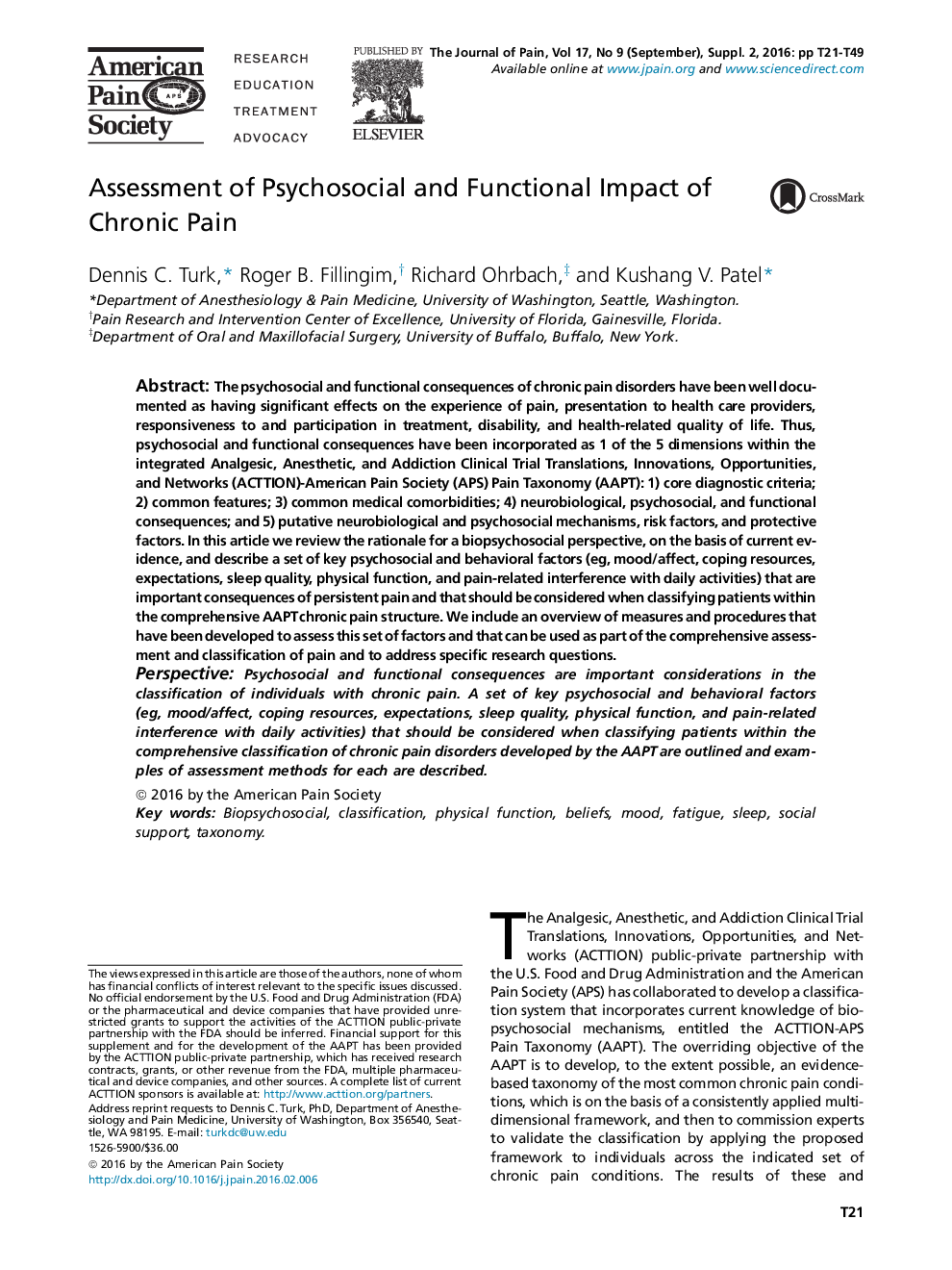| Article ID | Journal | Published Year | Pages | File Type |
|---|---|---|---|---|
| 2722787 | The Journal of Pain | 2016 | 29 Pages |
•The rationale for a biopsychosocial perspective is presented.•The role of emotional and physical functioning, coping, expectation, and sleep are described.•Psychosocial and behavioral consequences of persistent pain are discussed.•Dimension 4 of the American Pain Society Taxonomy (ie, psychosocial and functional consequences) is described.•Methods to assess these factors for the classification of chronic pain are reviewed.
The psychosocial and functional consequences of chronic pain disorders have been well documented as having significant effects on the experience of pain, presentation to health care providers, responsiveness to and participation in treatment, disability, and health-related quality of life. Thus, psychosocial and functional consequences have been incorporated as 1 of the 5 dimensions within the integrated Analgesic, Anesthetic, and Addiction Clinical Trial Translations, Innovations, Opportunities, and Networks (ACTTION)-American Pain Society (APS) Pain Taxonomy (AAPT): 1) core diagnostic criteria; 2) common features; 3) common medical comorbidities; 4) neurobiological, psychosocial, and functional consequences; and 5) putative neurobiological and psychosocial mechanisms, risk factors, and protective factors. In this article we review the rationale for a biopsychosocial perspective, on the basis of current evidence, and describe a set of key psychosocial and behavioral factors (eg, mood/affect, coping resources, expectations, sleep quality, physical function, and pain-related interference with daily activities) that are important consequences of persistent pain and that should be considered when classifying patients within the comprehensive AAPT chronic pain structure. We include an overview of measures and procedures that have been developed to assess this set of factors and that can be used as part of the comprehensive assessment and classification of pain and to address specific research questions.PerspectivePsychosocial and functional consequences are important considerations in the classification of individuals with chronic pain. A set of key psychosocial and behavioral factors (eg, mood/affect, coping resources, expectations, sleep quality, physical function, and pain-related interference with daily activities) that should be considered when classifying patients within the comprehensive classification of chronic pain disorders developed by the AAPT are outlined and examples of assessment methods for each are described.
